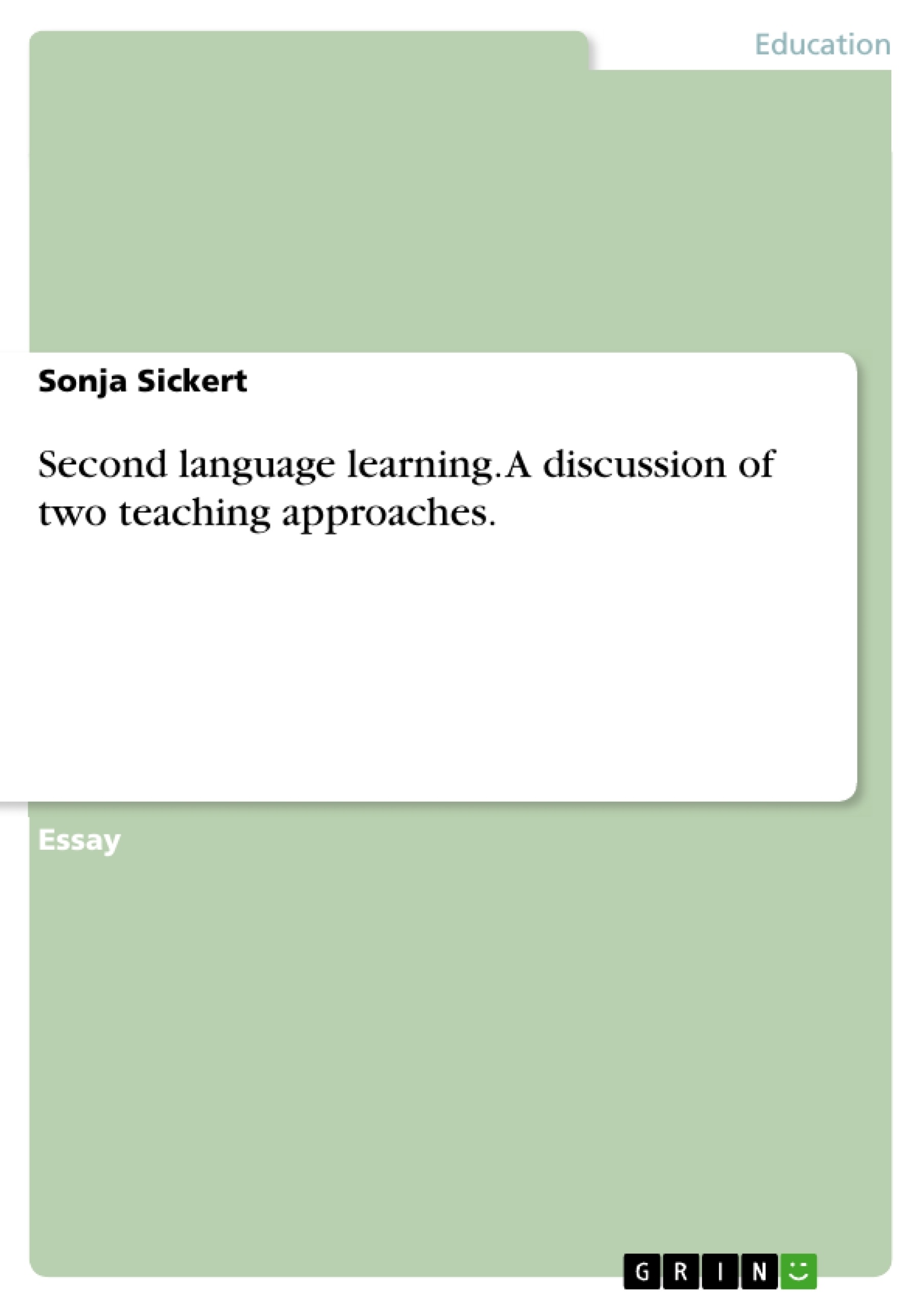The first attempts of teaching a foreign language were derived from teaching Latin in the sixteenth to eighteenth century. After the decline of Latin as a living language, the main teaching aim was to read and understand historic Latin writings. This situation led to teaching grammar and vocabulary through rote learning. The study of Latin grammar was known to encourage intellectual abilities. Applied to teaching methods in the nineteenth century the Grammar-Translation Method emerged. Since the eighteenth century, foreign language teaching has increased in importance. As modern languages conquer the school schedules in Europe the lessons were based on experience of teaching Latin and the same method was used to teach modern languages. Oral speaking abilities were just used to read aloud the translation they had dealt with. The main exercise was translation from foreign language into mother tongue with the objective to comprehend and learn the different grammar structure between these languages. The Grammar-Translation method became the traditional teaching method from the nineteenth century onwards.
Introduction
Nowadays speaking a second language has become increasingly important in social and economic life. What is more important seems to be efficient acquirement of foreign language. Two of the various different approaches and methods are elaborated in terms of suitability to learners. In section one of my essay the Grammar-Translation method is described and section two is dedicated to the Communicative Language Teaching. These two different approaches illustrate in a distinct way the wide range of second language acquisition and they may build a contrary line of approach. A comparison of pros and cons of each approach is outlined in section three. It primarily deals with second language learning methods as adults or young teenagers in Britain and the EU. Second language acquisition and foreign language acquisition are in this context equivalent and both mean learning a language different from mother tongue.
Grammar-Translation method in past.
The first attempts of teaching a foreign language were derived from teaching Latin in the sixteenth to eighteenth century. After the decline of Latin as a living language, the main teaching aim was to read and understand historic Latin writings. This situation led to teaching grammar and vocabulary through rote learning. The study of Latin grammar was known to encourage intellectual abilities. Applied to teaching methods in the nineteenth century the Grammar-Translation Method emerged. Since the eighteenth century, foreign language teaching has increased in importance. As modern languages conquer the school schedules in Europe the lessons were based on experience of teaching Latin and the same method was used to teach modern languages. Oral speaking abilities were just used to read aloud the translation they had dealt with. The main exercise was translation from foreign language into mother tongue with the objective to comprehend and learn the different grammar structure between these languages. The Grammar-Translation method became the traditional teaching method from the nineteenth century onwards.
The method.
The Grammar-Translation Method has its focus on learning to understand foreign language writing. The approach is based on intensive study of grammar rules combined with translation exercises. “It hence views language learning as consisting of little more than memorizing rules and facts in order to understand and manipulate the morphology and syntax of the foreign language” (Richards & Rodgers 1986: 5). Less consideration is given to listening comprehension and communicative ability of language learners. The learner’s first language is used to explain grammar rules and new vocabulary. The main point of the lesson is grammar teaching. Also characteristic of the approach is that learners “…have to understand the abstract explanation before applying it in their own speech. […] The style values what people know about a language rather than what they comprehend or produce” (Cook 1993: 202).
The Grammar method is sometimes criticized to create a sense of frustration at the students caused by the one-sided teaching method. Likewise the method is claimed to promote only two of four communication skills as they were writing and reading and neglecting listening comprehension and speaking ability.
[...]
- Citation du texte
- Sonja Sickert (Auteur), 2005, Second language learning. A discussion of two teaching approaches. , Munich, GRIN Verlag, https://www.grin.com/document/62730
-

-

-

-
Téléchargez vos propres textes! Gagnez de l'argent et un iPhone X. -

-
Téléchargez vos propres textes! Gagnez de l'argent et un iPhone X. -

-
Téléchargez vos propres textes! Gagnez de l'argent et un iPhone X. -

-
Téléchargez vos propres textes! Gagnez de l'argent et un iPhone X. -

-
Téléchargez vos propres textes! Gagnez de l'argent et un iPhone X.

